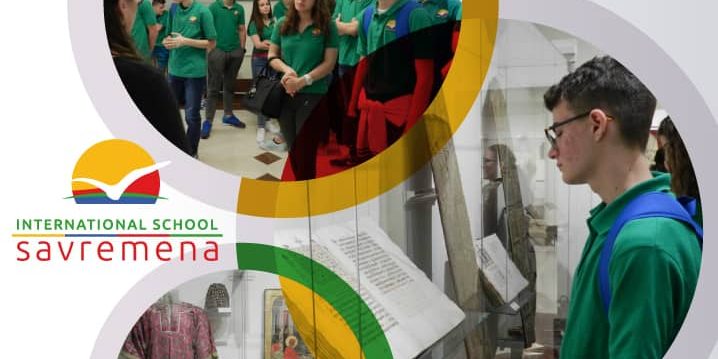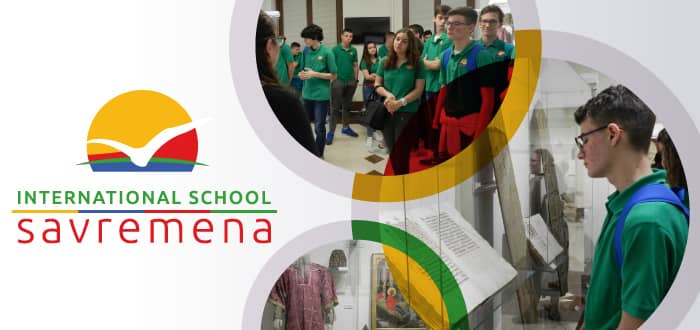The late spring Tuesday and Wednesday of 30 and 31 May were chosen for Savremena’s students’ visits to the Museum of the Serbian Orthodox Church, where they witnessed the beauty of artefacts of inestimable religious, cultural and artistic value, that vividly tell the story of Serbian Orthodox Church’s past, from Stefan Nemanja and Saint Sava to this day.
Museum that helps keep the orthodox heritage
The Museum of the Serbian Orthodox Church, located in the Patriarchate Palace at Kosančićev Venac, houses a wealth of relics from the rich orthodox heritage, including items protected by UNSECO.
The Museum is home to an extensive collection of the most valuable handwritten and printed church books, old Serbian etchings, vestments, sacral objects made of metal, wood, bone, nacre and skin, votive offerings, church embroidery, seals, historical documents and the portraits of church dignitaries.
History and religious education at the source
It was a great opportunity for the students to learn how cities, castles, fortresses… disappeared in the course of the toilsome Serbian past; when they learned that a part of the cultural heritage was preserved by monks and priests, their respect for them grew even greater.
Savremena’s students who chose religious education as elective subject delighted in seeing King Milutin’s epitaphios, Holy Prince Lazar’s robes, nun Jefimija’s “Encomium to Prince Lazar”, King Dušan’s charters, as well as the reliquary of Saint Stefan of Dečani from 1343; they also visited the Saint Simeon’s Chapel.
The students also viewed the charters and other documents that bear witness to the history of Serbia and the Serbian church through relations with Russia, Austria and Turkey, as well as works by our most renowned painters – the portraits of patriarchs, metropolitans, bishops and dignitaries from Serbia’s past, that left a strong impression on the students, reminding them of the importance those people had on the development of Serbian spirituality, art and culture.
Savremena recognises the students’ interests, and their activities are tailored to their wishes. During this school year, the students repeatedly expressed eagerness for studying Serbian history and tradition, and this visit to the museum was an excellent opportunity to understand them better and get to cherish them even more.




